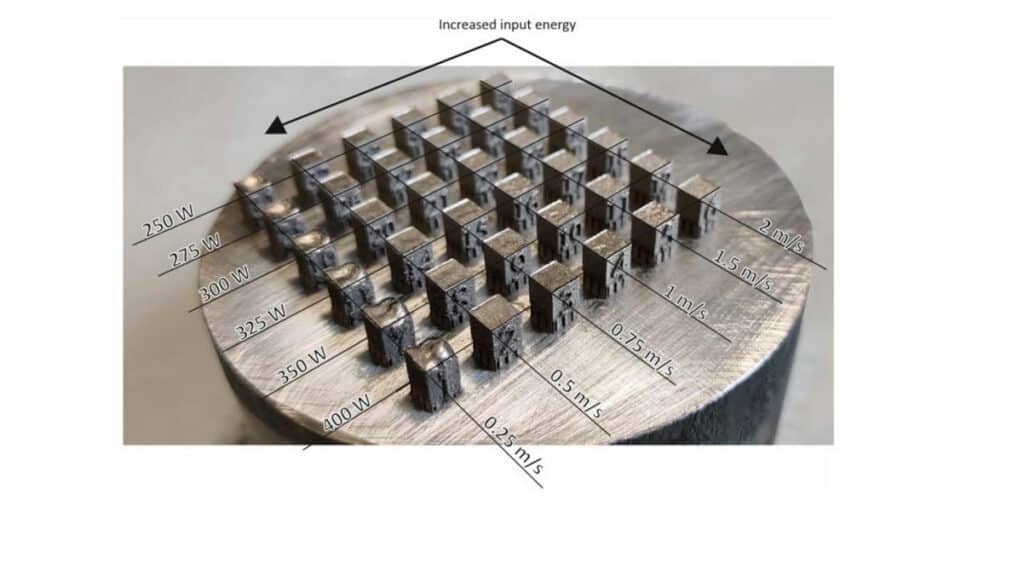Researchers from the Tallinn University of Technology and the Estonian University of Life Sciences are investigating the use of 3D printing technology to produce soft magnetic cores. The laser-based additive manufacturing workflow that they claim can yield superior magnetic properties to soft magnetic composites.
Magnetic cores are pieces of magnetic material with high permeability. They’re commonly used to guide and direct magnetic fields in a wide variety of electrical systems and machines, including, electromagnets, transformers, electric motors, generators, inductors, and other magnetic assemblies.
Until now, the 3D printing of soft magnetic cores has been a major challenge due to difficulties in preserving core efficiency. Recently, considerable progress has been achieved and researchers have produced cores with high permeability and magnetization values. However, achieving optimized additive manufactured cores with minimal core loss has been problematic so far. The research team has now proposed a comprehensive laser-based additive manufacturing workflow that they claim can yield superior magnetic properties to soft magnetic composites.
3D Printed Magnetic Cores for Electrical Machines
The additive manufacturing of metals with electromagnetic properties is an emerging field of research. The electrical machine research community is now beginning to develop and integrate its own 3D printed components into systems, citing design freedom as a huge benefit for innovation.
For instance, 3D printing functional complex parts with magnetic and electrical properties could pave the way for custom machines with embedded motors, actuators, electrical circuits, and gearboxes. Such machines could be produced in digital manufacturing facilities with minimal assembly, post-processing, and material waste, with many of the moving components 3D printed.
Unfortunately, 3D printing large sections of complex electrical machines is still not a reality due to several factors. These devices often have challenging requirements such as small air gaps for improved power density, not to mention the need for multi-material assemblies.
As such, research so far has primarily focused on more ‘basic’ parts such as 3D printed soft magnetic rotors, copper coils, and alumina heat guides. Soft magnetic cores are also of significant interest, but minimizing core loss in the 3D printing process is a hurdle yet to be jumped.
A set of printed sample cubes showcasing the effects of laser power and print speed on the magnetic core structures. Photo via Tallinn University of Technology.
With the aim of showcasing an optimized 3D printing workflow for magnetic cores, the researchers determined the best process parameters for the application, including laser power, scanning speed, hatch spacing, and layer thickness.
The team also looked into the effects of annealing parameters to achieve minimal DC losses, quasi-static, hysteresis losses, and the highest magnetic permeability. The optimal annealing temperature was determined to be 1200°C, which resulted in the highest relative density of 99.86%, the lowest surface roughness of 0.041mm, minimal hysteresis losses of 0.8W/kg, and ultimate yield strength of 420MPa.
Conclusions
The findings of this paper suggest the applicability of fused magnetic cores made by laser additive 3D printing for the construction of electrical machines. Additively manufactured cores are vastly superior for low-frequency applications, as they show superior material properties and
a considerably larger geometrical freedom for core design.
This would also suggest the usefulness of laser additive 3D printing in the preparation of novel transversal flux, multi-axial, and spherical
or perhaps completely new machine designs—which can benefit from a wider range of topologies and more refined structures.
As far as future work goes, the team intends to characterize the parts’ microstrutures to gain insights into grain size and grain orientation, as well as their effects on magnetic permeability and strength. The researchers will also further investigate ways of optimizing the geometries of the 3D printed cores for improved performance.
Source:
Energies 2022, 15(10), 3665; https://doi.org/10.3390/en15103665
